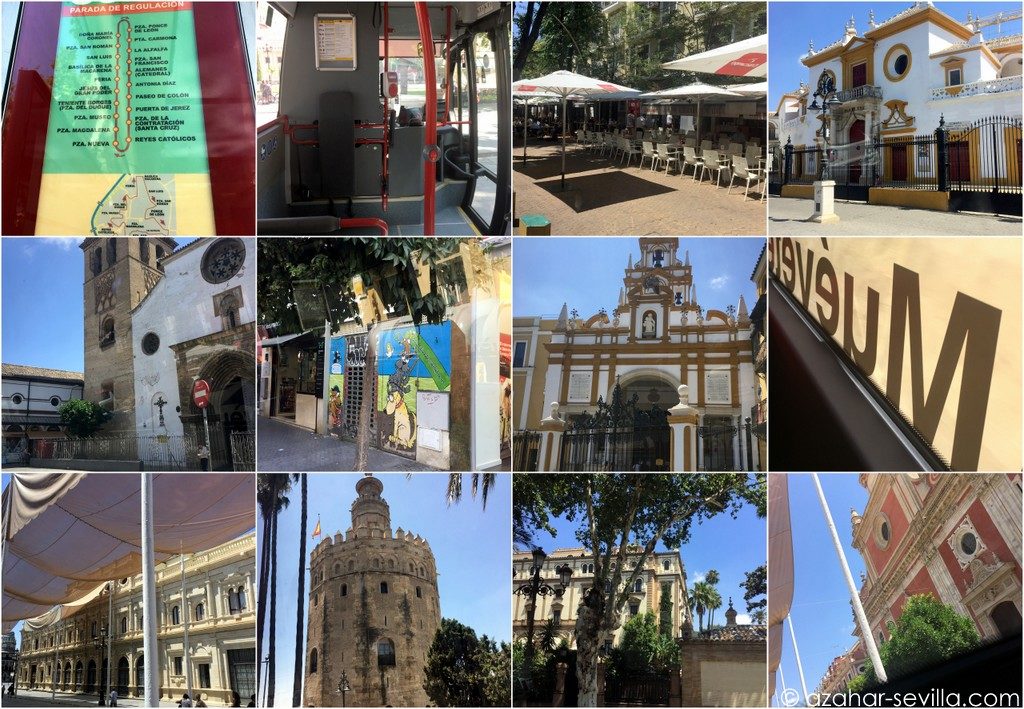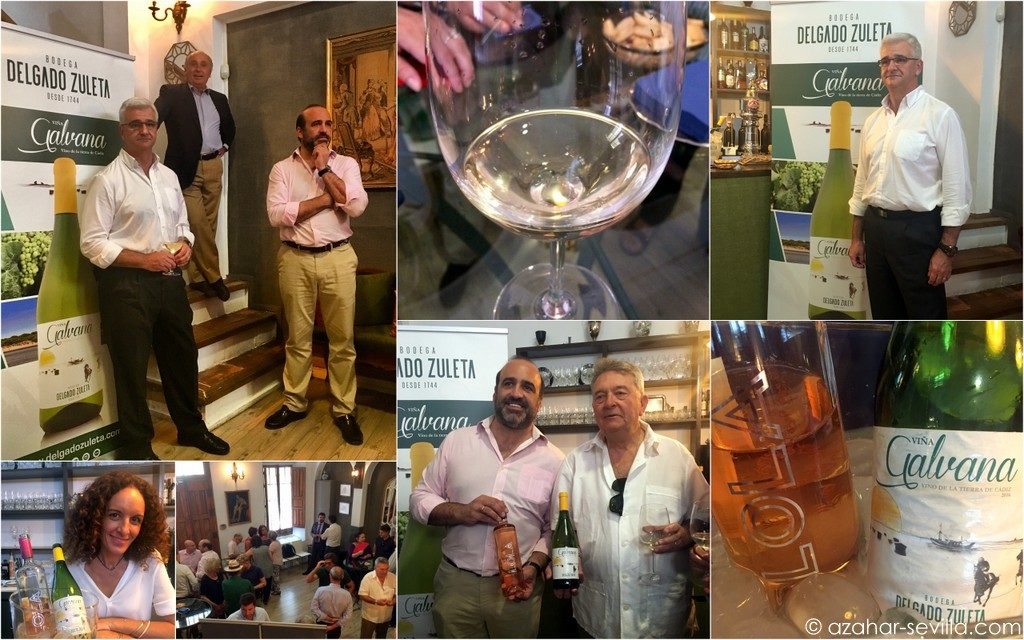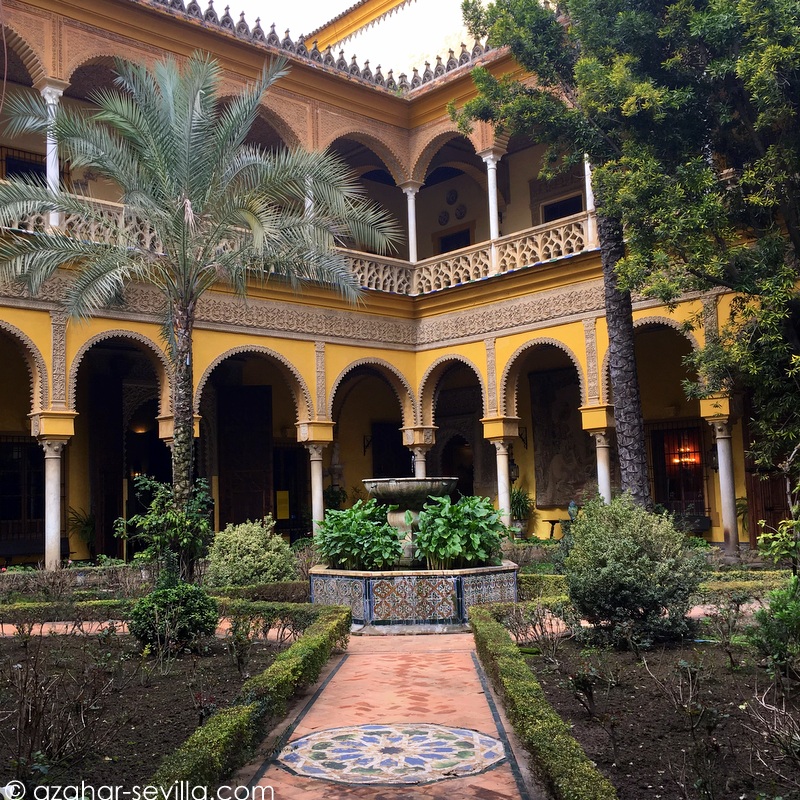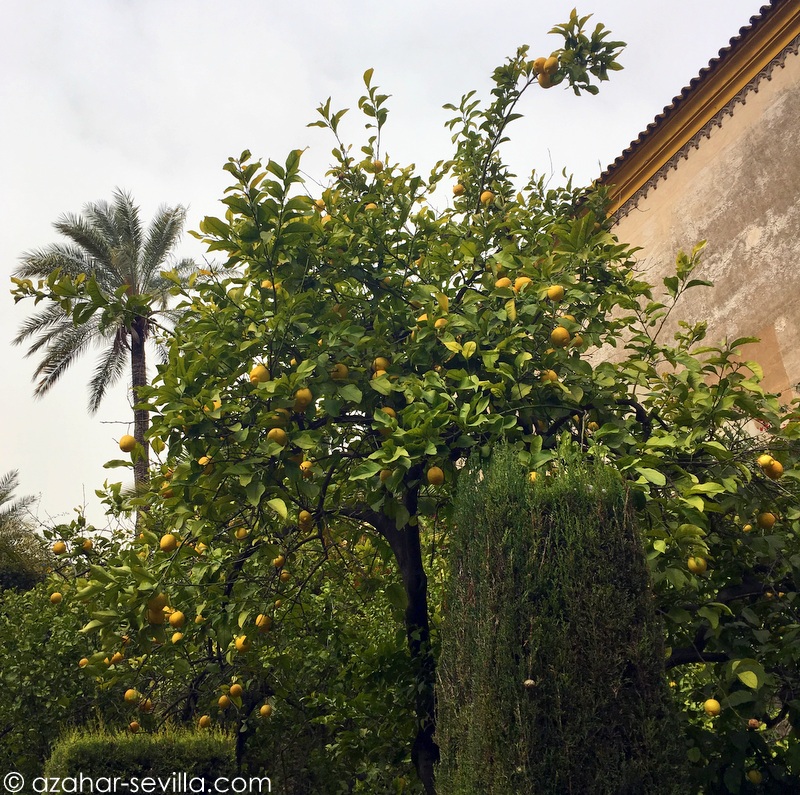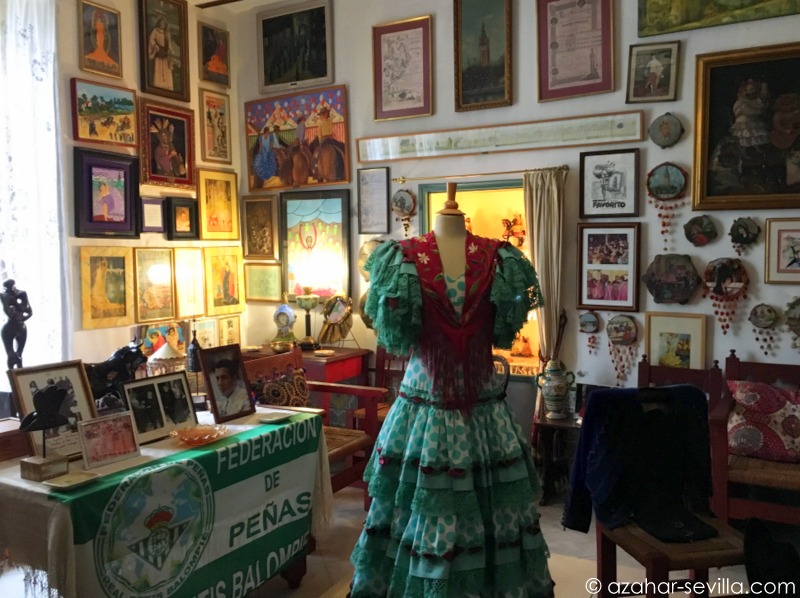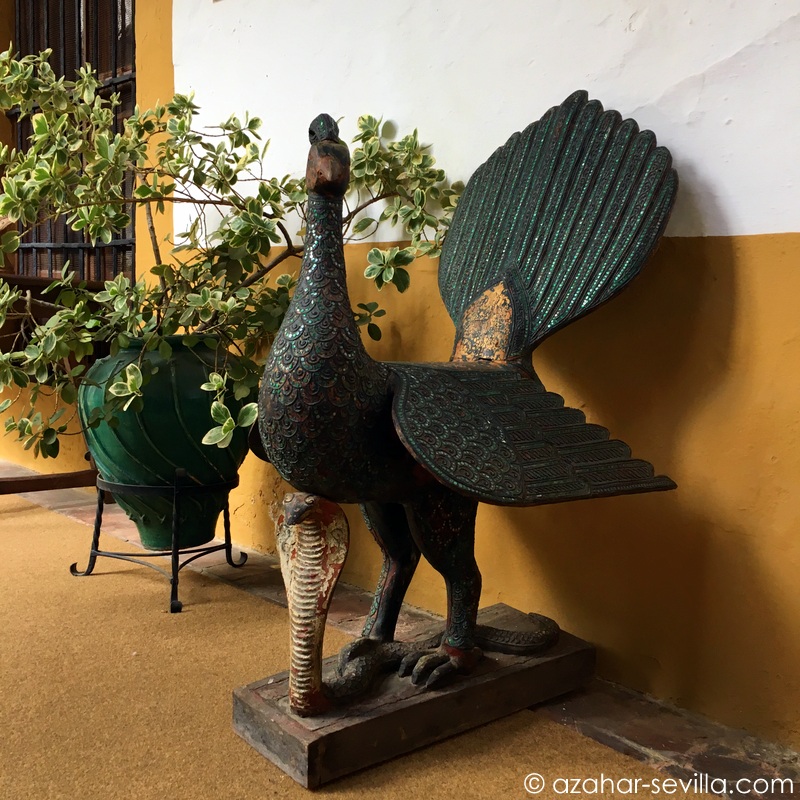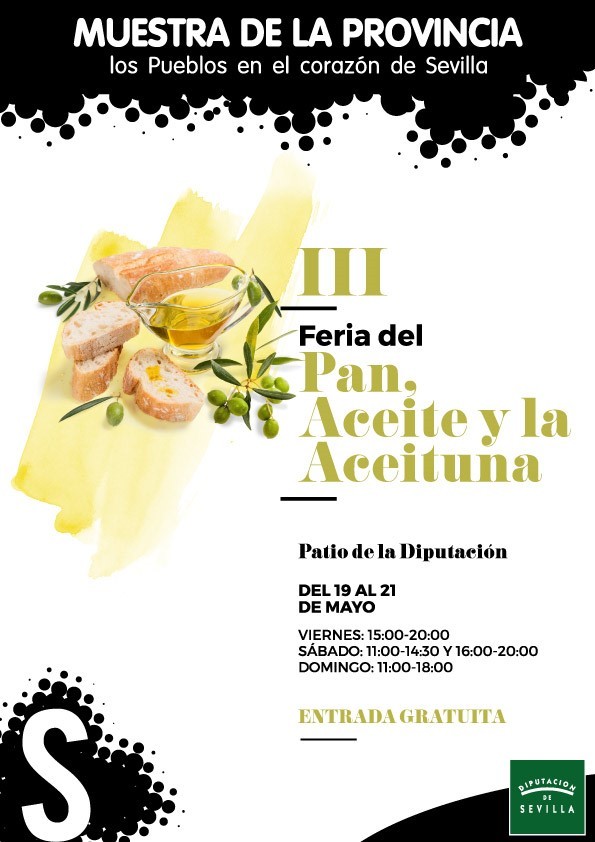Staycation n. a holiday or break spent at or near home pursuing leisure activities.
I’m not generally a huge fan of hybrid words that seem to have been invented primarily to seem hip, but as someone who very rarely gets the opportunity to disconnect and just chill, the idea itself had a certain appeal. As luck would have it, I was recently invited to spend a night at the Hotel Doña Maria, a well known city centre hotel here in Seville. So why not? Staycation here we come.
Check in was around 1.00 pm, and we (myself and my friend Peter @SVQconcierge) took possession of a superior double room on the second floor, across the narrow street from the Archbishop’s palace. Good sized room with a slightly faded old fashioned charm, two nice firm beds and a spacious bathroom.
Although I had never stayed here, the Doña Maria was not a totally unknown quantity, as it has a rooftop terrace with one of the best views in town of the Cathedral and Giralda tower. So after checking in, a cooling Beer O’clock refresher upstairs was naturally our first port of call. The view across the Plaza Virgen de los Reyes square, with the swifts wheeling and crying round the tower, is one of my favourites in all Sevilla. There are also regular music events scheduled during the summer – check the Doña Maria Facebook page for details.
Lunchtime, and even if you’re not the Queen of Tapas, the choice of primary activity for the next couple of hours was something of a no-brainer. Although the hotel doesn’t have a restaurant, there are dozens of bars within easy walking distance, but a word of warning – this area is “tourist central”, and in (too) many of the bars the food and service is mediocre. There are, however, some that are really excellent. If you’re looking for something traditional follow us to our first stop in the heart of the Santa Cruz, the famous Bar Las Teresas, and one of the best places in town for that Spanish essential, Jamon Ibérico de Bellota with a glass of Fino sherry. Second stop was the other end of tapas bar spectrum, the modern but equally excellent La Azotea, for a nice glass of cava and some fish and seafood. Anyone for crispy prawns with kimchee sauce?
After lunch we took a short walk before heading back to the hotel for another Spanish tradition – siesta. Now siesta is something I don’t usually do, but having disconnected from my normal routine, a little peace and quiet and a comfy bed soon worked their magic. In fact, it’s been a long time since I’ve slept that much in the afternoon. Carried me right through until it was time to get ready for evening tapas (yes, we had thought of including more activities other than eating – electric bikes maybe? – so next staycation I’ll start a bit earlier as I really don’t have to wait for check-in time). Got a few nice walks in though, which felt nicely different to when I am going around town either working or running errands.
In the evening we headed off in the opposite direction to our lunchtime tapeo, to Barrio El Arenal, away from the more touristy area round the Cathedral, but still comfortably close to the hotel. We started at an old favourite, Casa Moreno, a tiny abacería in Calle Gamazo. When I first discovered this place I was a little nervous of going in, as it has such a “locals only” look to it, but once I did I found it was really friendly, and it’s become a firm favourite. The speciality is montaditos, toasted buns with a variety of meat and cheese fillings that are to die for.
From there we popped across the street to Enrique Becerra. This is an excellent bar that I used to come to all the time, but I hadn’t been for awhile, so it was real pleasure to see Enrique again and my barmen pals, along with enjoying an exceptional beef “Señor Marquez” with some of the best chips in town. I left vowing to come back more often.
A quick third stop was at my second home, Bodeguita Romero, then it was back to the hotel for a final nightcap on the terrace, with its spectacular views, and so to bed. Have to say I slept like a top, and even so close to the main square and with the windows open I wasn’t disturbed by any noise, and had a nice lie in – one of life’s little luxuries that I don’t often get the chance to indulge, and one of the reasons for taking a staycation in the first place.

Last act before leaving the next morning was the hotel breakfast, something I don’t normally do unless it’s inclusive (which this was), preferring to find a local bar for my toast and coffee. The hotel has a dedicated breakfast room, pleasant enough but not much in the way of conviviality and atmosphere, and much the same could be said of the breakfast itself. This isn’t really a criticism, as in my experience it’s true of almost every hotel I’ve ever been to that serves a buffet breakfast. Afterwards we took a stroll through the Barrio Santa Cruz before heading home.
Overall I really enjoyed my short stay at the Doña Maria and think it’s a good mid price option for a stay in Sevilla.
After now having done it once (okay, twice), I’m definitely up for making Sevilla Staycations a regular, though probably occasional, part of my life here.
Hotel Doña Maria
Calle Don Remondo, 19
Sevilla
Tel: +34 954 224 990

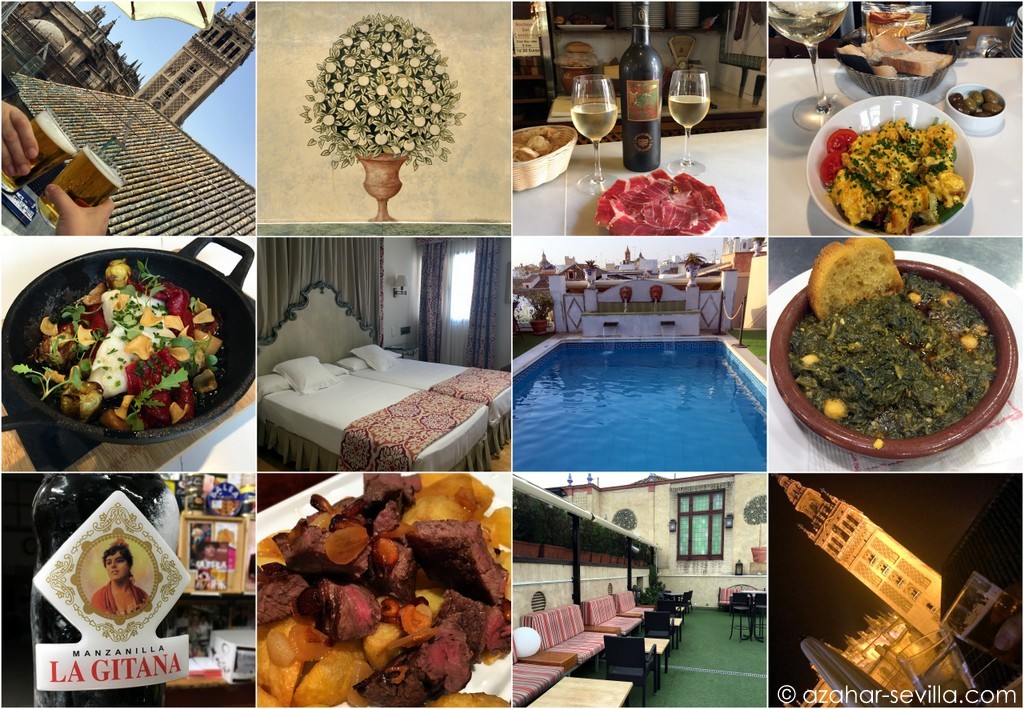
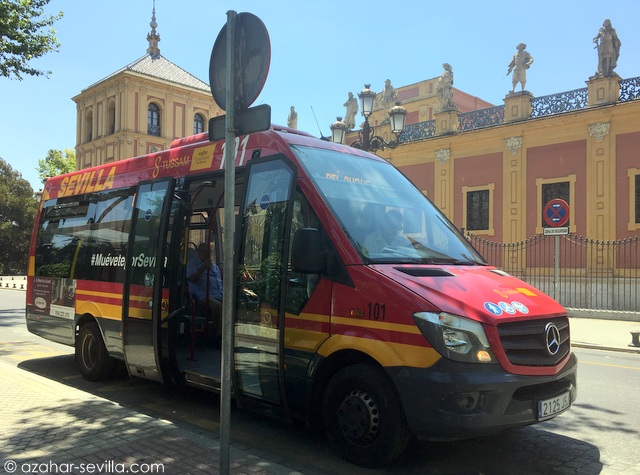 For years I’ve seen this cute microbus all around town – and I mean ALL around – but not in a way that made any sense. I’d wonder how the C5 bus stop could be in so many seemingly random spots and where it could possibly be going. Then one day my friends
For years I’ve seen this cute microbus all around town – and I mean ALL around – but not in a way that made any sense. I’d wonder how the C5 bus stop could be in so many seemingly random spots and where it could possibly be going. Then one day my friends 